The Real Reason Why U2 & AOC Flipped On Anti-Nuke Advocacy
And it has nothing to do with environmentalism
Nuclear power is a technology for humanity where a massive amount of energy can be created from a miniscule amount of fuel. It’s been one of the most hotly debated topics in Western politics for decades. Some of the world’s most famous celebrities and politicians have burnished their credentials as environmentalists by railing against nuclear power.
And the West coming up against harsh geopolitical realities of multipolarity may be what settles the debate once and for all.
1970s: The Precipice of Nuclear Abundance
In the 1970s, humanity stood on the precipice of permanent energy abundance and growth. Traditionally, growth had always been somewhat mitigated by the rate at which natural resources could be extracted, controlled and harnessed; but with the density and abundance of uranium around the world, nuclear energy actually held promise to unlock a revolutionary amount of rapid human prosperity. Nuclear fuel can even be created from recycling military warheads, reprocessing nuclear waste, or re-enriching depleted uranium, even further reducing the need for uranium mining.
The thought of the human population growing unfettered from previous energy constraints fueled the West’s oligarchs into spinning the anti-nuclear movement into existence. Armed with the Club of Rome’s Limits to Growth report, reinforced by the mass market success of The Population Bomb and Silent Spring, and influenced by Small is Beautiful, the anti-nuclear movement marched to retard the flourishing of humanity from threatening the established order. No amount of risk or tradeoff was too small to block a nuclear plant from being built.
The hysteria generated by the anti-nuclear movement created plausible deniability for Western hegemony; any initiative that didn’t have the right winners and losers could be blocked by pointing activists like a loaded gun at it. One of the architects of the Green New Deal was Senator Ed Markey, who spent decades blocking uranium shipments to energy-starved India’s nuclear power plants (India now partners with Rosatom to get its nuclear fuel). Robert F. Kennedy Jr. was dispatched to Cuba to prevent them from working with Rosatom to build a nuclear plant; 30 years later, the country is still crippled by blackouts and energy poverty.
Then and now, nuclear’s strength is also its biggest weakness; it’s so efficient that there isn’t enough graft and middlemen to build constituencies to protect the industry from attack. As
(B.F. Randall) often points out, the market for cow dung fuel in India is $4B while the global market for uranium is worth only $790M. $4B in cow dung pays for an extremely low standard of living for some people in India; $790M in uranium is enough to produce 5x more energy than what humanity consumes. That means that when a well-funded NGO like Greenpeace or Friends of the Earth has pushed on a nuclear plant or a uranium mine, there was more political incentive to go along with them than to stand up for nuclear energy on principle.AOC, U2 and Greta Thunberg Once Danced on the Grave of the Nuclear Power Industry
The anti-nuclear energy movement enjoyed over 40 unchecked years of primacy. Celebrity activists like Congresswoman Alexandria Ocasio-Cortez, U2, and Greta Thunberg danced on the graves of nuclear power plants, combining well-established lies and trope with emotional appeals to burnish their credentials as strident environmentalists.
Here’s AOC saying that Indian Point Nuclear Power Plant (the safest and longest-running plant in the world) should’ve been shut down a long time ago in favor of 100% renewables:
Here’s U2 playing a “Stop Sellafield” nuclear fuel processing concert in the UK in the early 1990s, while words like “Kill Baby Lies Car Future Victim Anti-Christ Frenzy Fear Decay Earth Rape” flashed rapidly behind them on a screen:
Here’s Greta condemning nuclear as extremely dangerous, expensive, and time-consuming:
These efforts were part of a very successful larger effort to hold back the development of nuclear energy. Thanks to the political environment and trumped up narratives like the Fukushima incident (where only one person died from radiation), the global commodity price for uranium collapsed to some of its lowest-ever levels (adjusted for inflation).
According to Statista, the global number of operating nuclear plants flatlined since 1988, while the global share of nuclear electricity production has declined from a peak of 17% in the 1990s to around 10% today.
Multipolarity Revives the Nuclear Power Industry
The growth of the BRICS+ sector of developing countries, the innovations of state-owned Chinese and Russian nuclear energy companies, the impotent underperformance of renewable energy initiatives in developed countries, and the success of China’s Belt and Road Initiative have turned the anti-nuclear industry on its head.
There are at least 57 nuclear power plants under construction worldwide; 21 in China and eight in India. At least 100 more are planned, and 300 more are proposed; with the plurality coming from China’s plans to spend $440B to build 150 new reactors by 2035. Through the Belt and Road Initiative, China may finance as many as 30 nuclear reactors in developing countries around the world by 2030. Russia may also help build as many as 33 reactors abroad via Rosatom.
The commodity price of uranium reflects this as well; the price has roared back to what it was pre-Fukushima in 2011.
Germany, which dismantled its nuclear plants and spurned Russian gas in favor of renewable energy, is being rapidly deindustrialized and destabilized because it has no reliable energy. Meanwhile, countries that build nuclear plants are increasing their industrial capabilities and citizens’ average standard of living.
Anti-nuclear advocacy no longer serves a purpose for Western oligarchs
Funding anti-nuclear advocacy is no longer a viable mechanism of control for Western oligarchs. Mastery of nuclear power has been a critical factor for the rise of the developing world, despite what Western environmental NGOs say or do.
This is why today, the activists that I mentioned earlier are reversing their previous anti-nuclear stances. Not because their concerns were addressed (the concerns were always built on lies), but political conditions have changed:
The supremacy of the petrodollar is being challenged.
The West has less access to Russian natural gas.
The West is hesitant to drill for natural resources.
The West has committed to massively increasing its demand for electricity for “Net Zero” goals.
The West has to power its data centers and AI for the Fourth Industrial Revolution.
The arguments to stop nuclear plants from being built were always fear-based; the risk of a meltdown, everyday radiation exposure, waste disposal and a non-existent link to nuclear weapons proliferation were all easily resolved on the basis of science. They were political riddles designed to trick people into not wanting abundant and reliable energy.
Recently:
AOC said she supports nuclear energy after a trip to Fukushima
Greta Thunberg says existing nuclear plants should be kept open
U2 says nuclear energy is critical for “Net Zero”
Remarkably, the environment is being used as their main reason for supporting nuclear energy; in the past, the environment was their reason for opposing it!
This is all to mask the real purpose of anti-nuclear advocacy: it was always about control.
The Right Reason for Supporting Nuclear Energy
Make no mistake, the cohort around AOC, U2 and Greta Thunberg are not supporting nuclear energy because they’re excited about multipolarity, dedollarization and ending global poverty; they’re supporting it because it’s the West’s last best shot at maintaining hegemony.
Not only will nuclear energy provide “energy security” for Western nations while they finance forever war in Ukraine and eventually in Taiwan; it will power the Net Zero microgrids, AI data centers and cryptocurrency microtransactions that dominate their preferred vision of the future economy.
It doesn’t have to be this way. Peaceful collaboration between the three leaders in nuclear technology, the United States, China and Russia could even unlock the potential of fusion energy, which could create even more abundance with fewer limitations. Nuclear energy’s highest and best use is to power an abundant standard of living for all people.


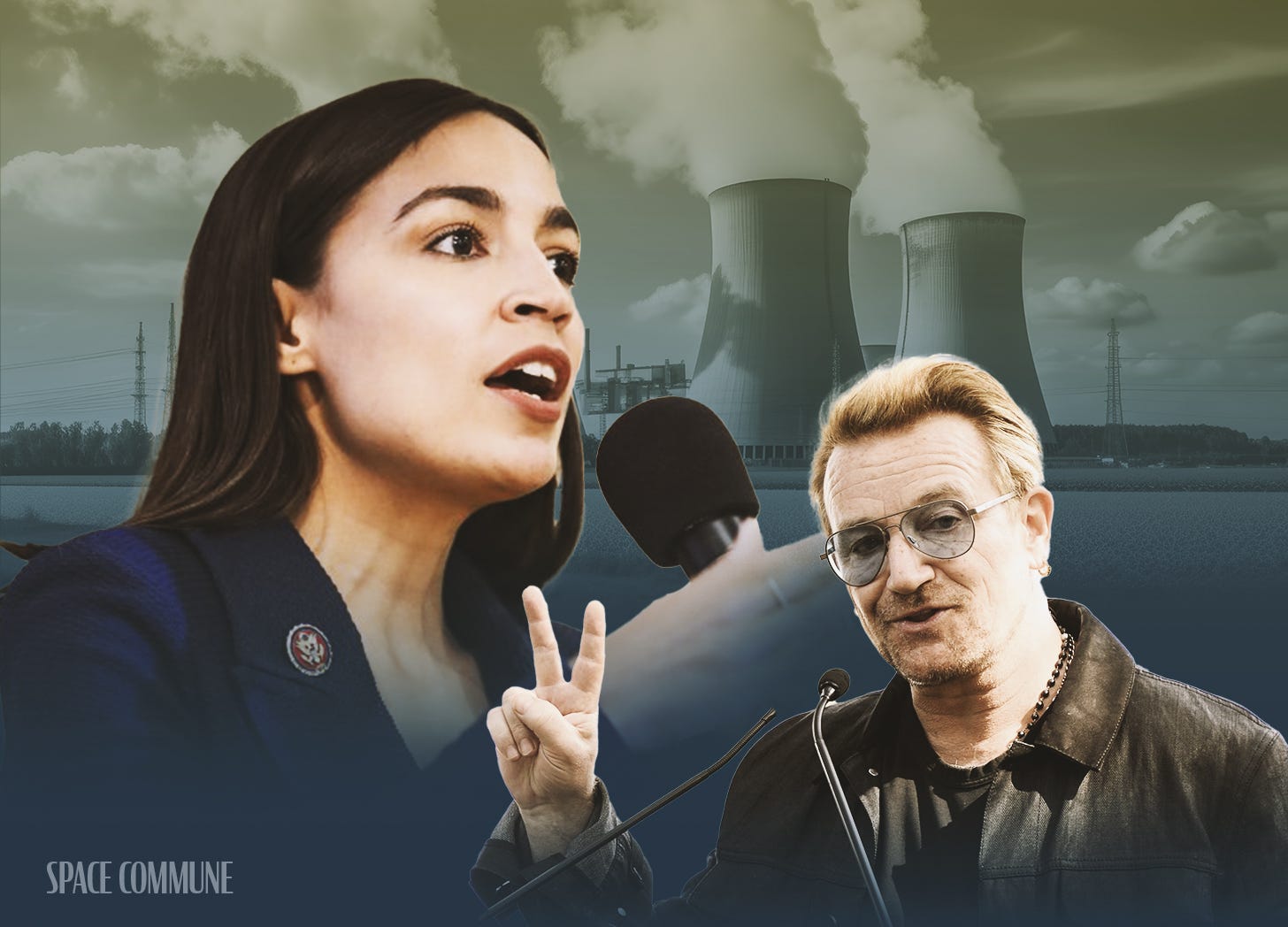



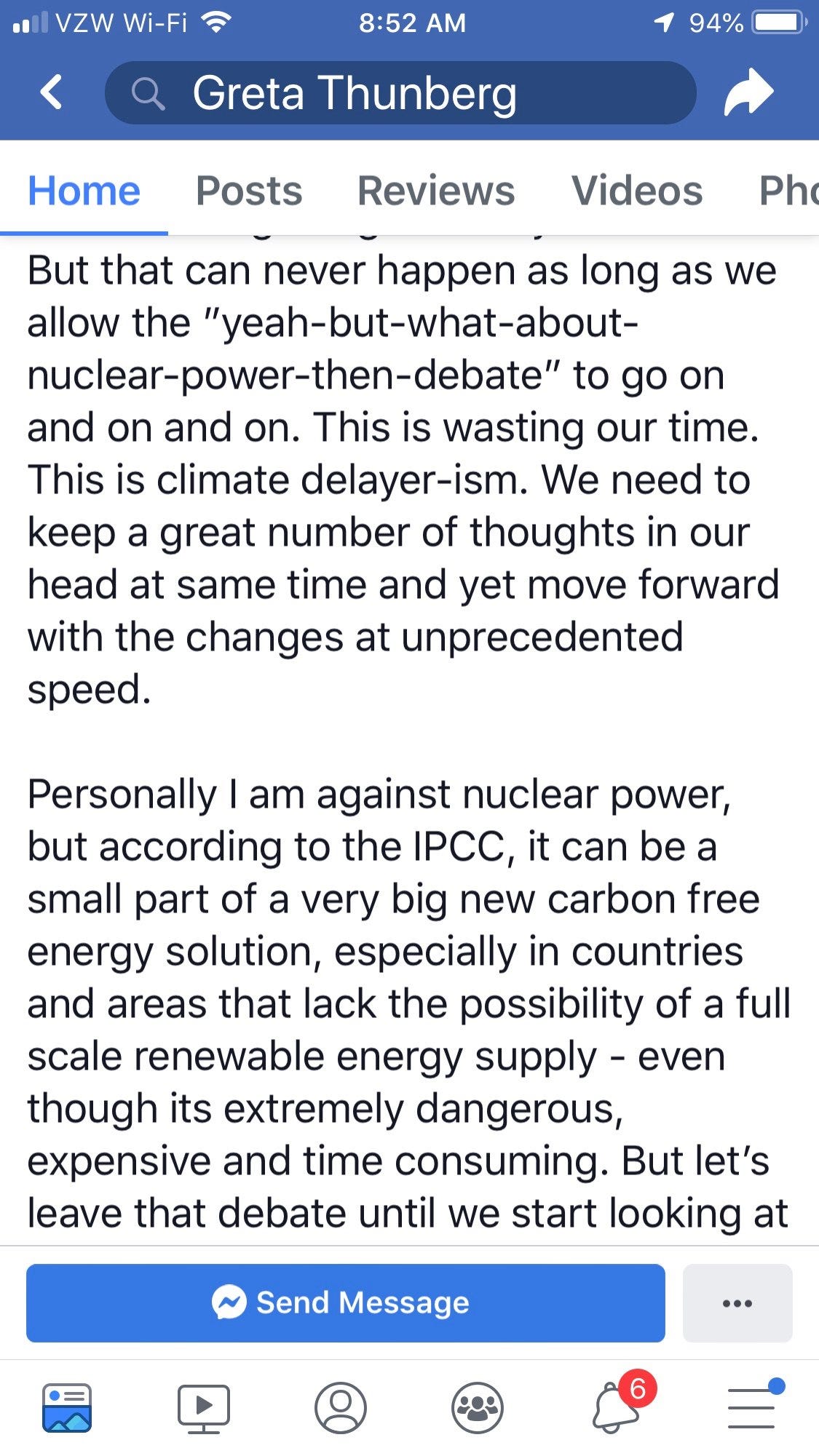


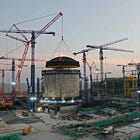
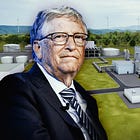
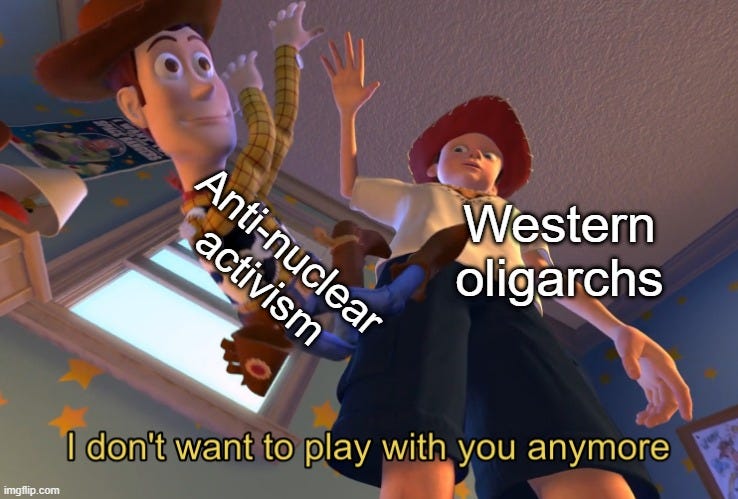
Great nuance! The question isn't just Nuclear: Yes? or No? but for what reason: Multipolar cooperation for development? Or Keeping Up With The Jones'es for competition and maintaining hegemony? This needs to be addressed. Great work!
Not sure I agree about “maintaining western hegemony” as the reason- it’s a bit too far of a jump at the end of the essay. I would say that with the inklings of multipolarity starting to show, the West now has competition for the first time since the “End of History.”
Competition actually requires people to bring their best to survive, and simple math tells us that nuclear is the best by far. The challenge will be to take the energy infrastructure that gets built for the AI censorship panopticon complex and wrest it away to do productive things like making steel and concrete and cars.
So let them come back to nuclear. We should welcome them and build the high energy future we want together. Hopefully we can build a “synthesis”world with free speech and other western ideals while ditching the foreign adventurism and other bad stuff!